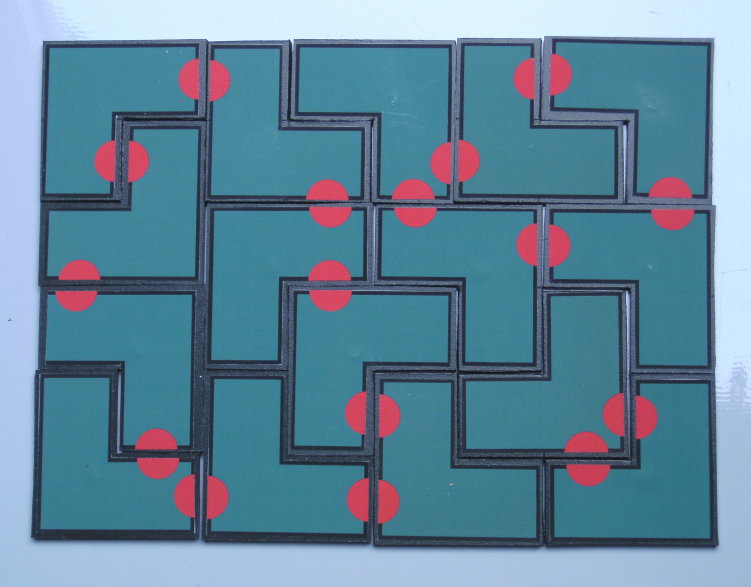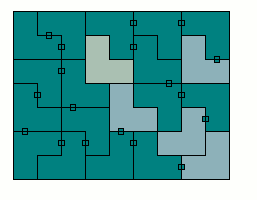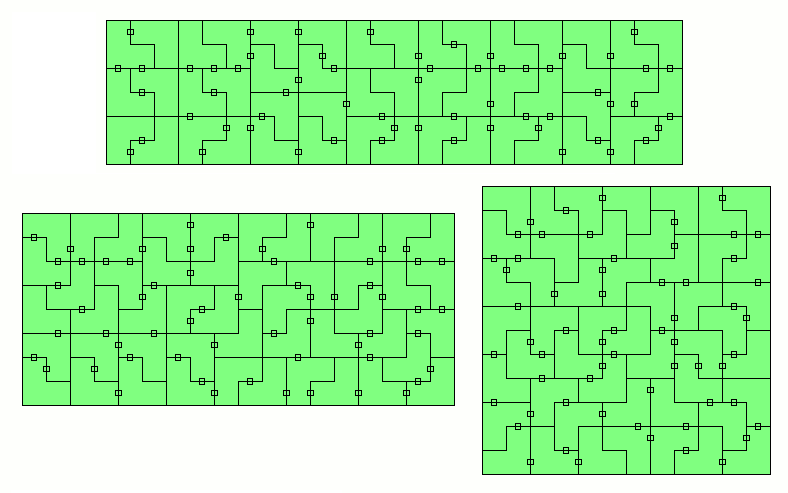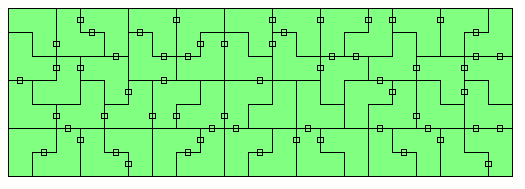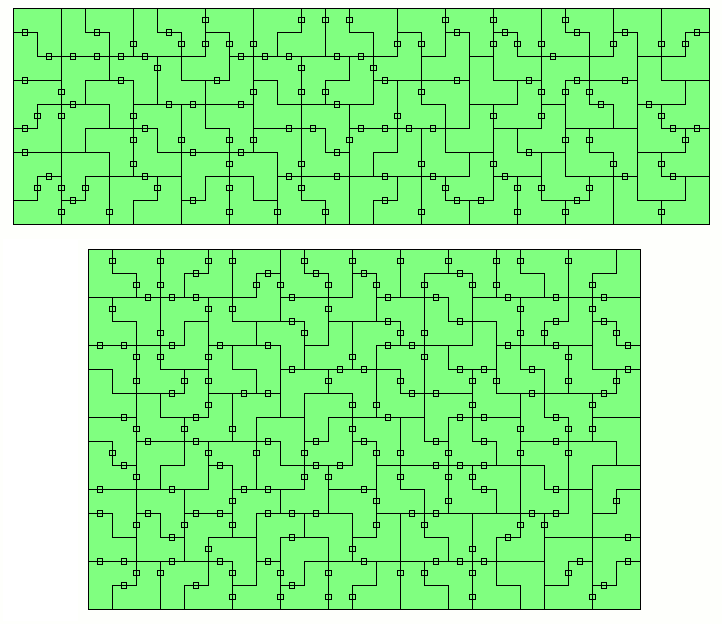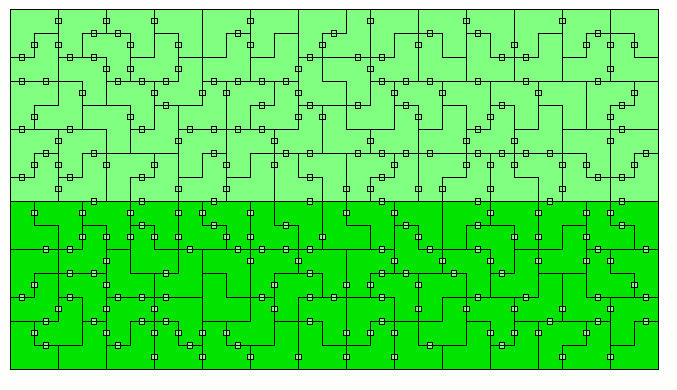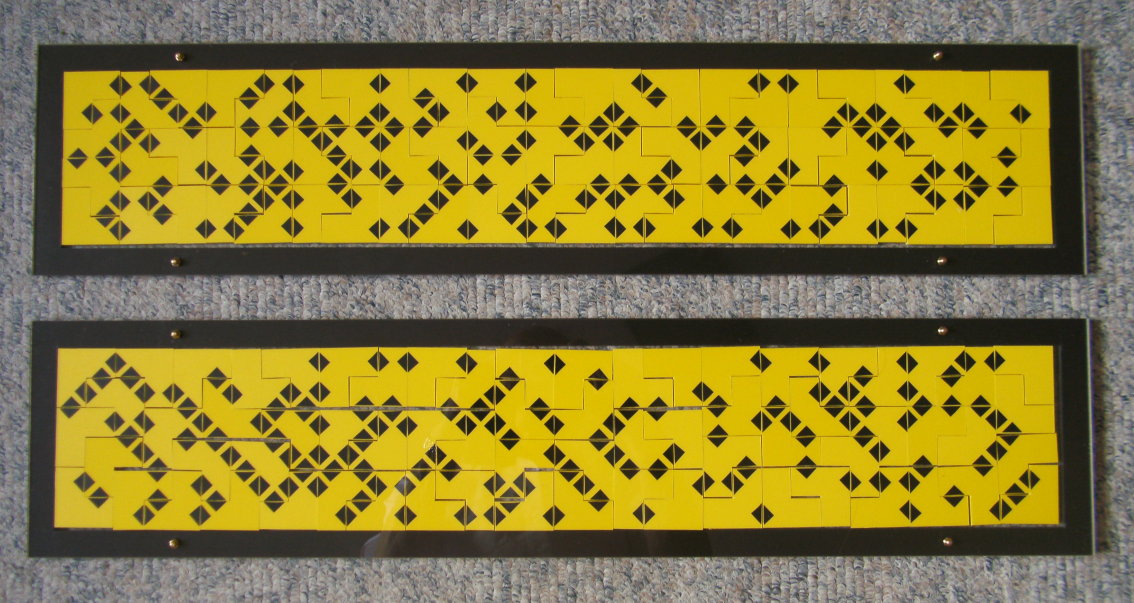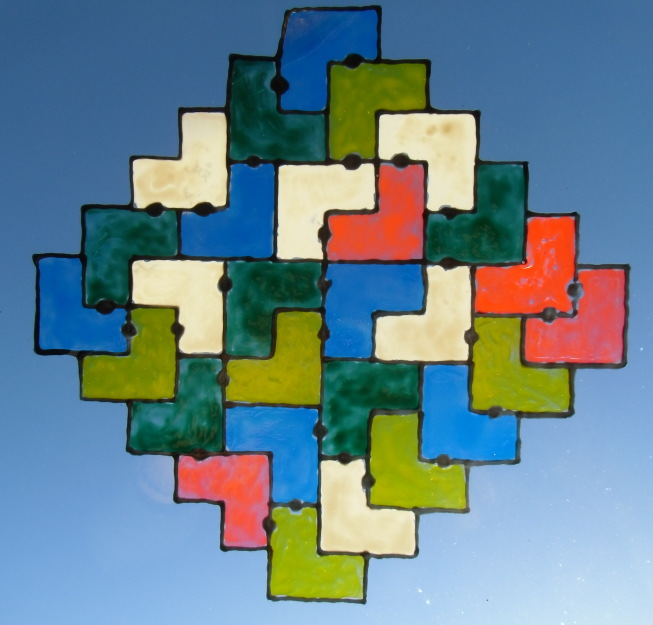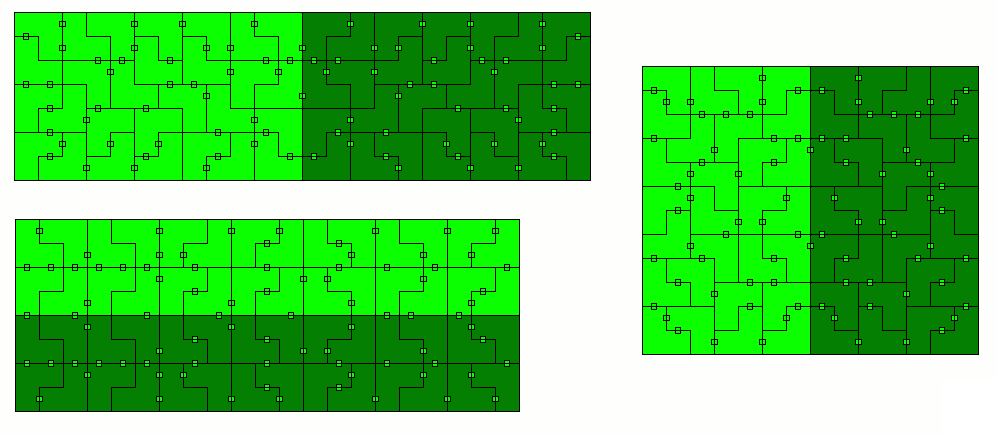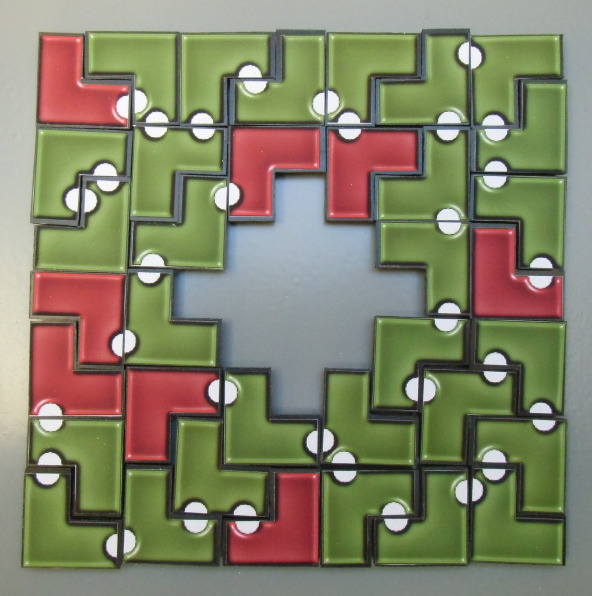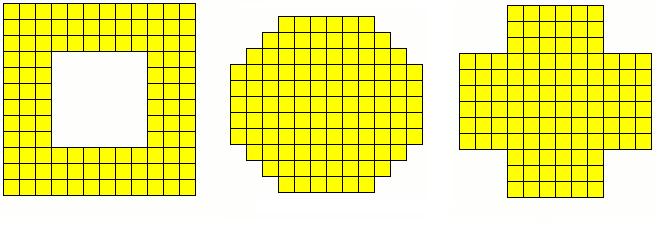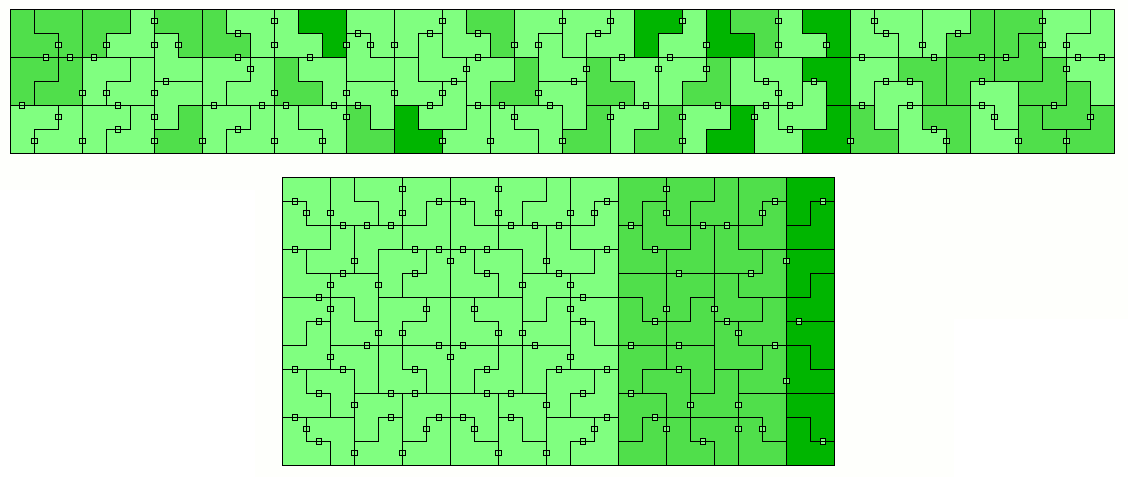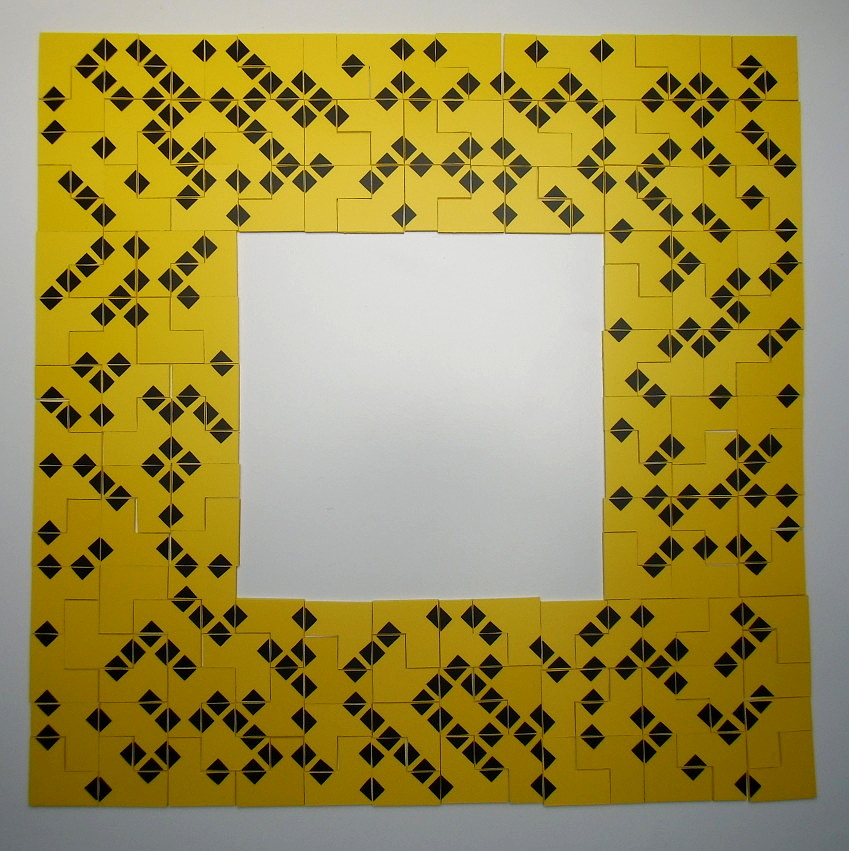

| Number of Notches | Number of Pieces | Total Area | Constructions | |
|---|---|---|---|---|
| Two-sided Pieces | k odd | 1/2*(8Ck) | 3/2*(8Ck) | |
| k even | 1/2*(8Ck + (4C(k/2))) | 3/2*(8Ck + (4C(k/2))) | ||
| 2 | 16 | 48 | 6x8 Rectangle Some symmetric figures |
|
| 3 | 28 | 84 | No rectangle | |
| 1..2 | 20 | 60 | 4x15, 5x12, 6x10 rectangles | |
| 1..3 | 48 | 144 | 6x24, 8x18, 12x12 rectangles | |
| 0..2 | 21 | 63 | 7x9 rectangle | |
| 0..3 | 49 | 147 | 7x21 rectangle | |
| 0..4 | 87 | 261 | 9x29 rectangle | |
| 0..5 | 115 | 345 | 15x23 rectangle | |
| 0..7 | 135 | 405 | 9x45 and 15x27 rectangles pentomino replicas |
|
| 0..8 | 136 | 408 | Two 6x34 rectangles square ring |
|
| One-sided Pieces | k | 8Ck | 3*(8Ck) | |
| 2 | 28 | 84 | 4x21, 6x14 and 7x12 rectangles jagged square, square ring, cross etc |
|
| 3 | 56 | 168 | 7x24, 8x21 and 12x14 rectangles | |
| 1..2 | 36 | 108 | Three 6x6 squares, 4x27 and 9x12 rectangles, square ring etc |
|
| 1..3 | 92 | 276 | 6x46 and 12x23 rectangles | |
| 0..3 | 93 | 279 | 9x31 rectangle |
